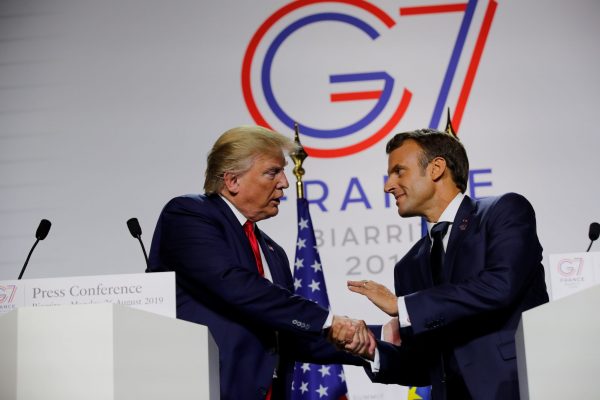French President Emmanuel Macron managed to elevate the agenda to include key global issues by inviting a large number of guests and even engineering the surprise visit of Iranian Foreign Minister Mohammad Javad Zarif to Biarritz. Macron had announced that there would be no communique, but the G7 leaders did manage to issue a one-page declaration. The press conference between Macron and Trump was an intense show revealing both competition but also mutual respect and positive energy between the two leaders. As noted by Alan Alexandroff, there was evidence of some counter leadership in the global order to balance Trump-instigated disorder.
Clearly, the leaders at the summit have been useful in providing new information and a sense of balance to Trump. They may have somewhat neutralised the barrage of angry decisions on China from last Friday. The events also created new openings and positive momentum on the Iran file, the World Trade Organization (WTO), China, and climate and biodiversity. Markets and policy analysts around the world are breathing a sigh of relief this week.
There are some important takeaways from the G7 summit both globally and specifically for Asia, though the full consequences remain to be seen.
The outcome of ‘lengthy discussions’ on Sunday in relation to China can be seen as a success. Trump was delivered a balanced perspective from all six leaders and the EU President who expressed support for the aim of having China reform its mercantilist practices but also great concerns about Trump’s use of tariffs. There was consensus among these leaders for joint action readjusting the interface of China with the global economy while preventing the collapse of both the global economy and global institutions.
The message seems to have inspired Trump to return to a hopeful message. The G7 declaration includes a joint commitment ‘to eliminate unfair trade practices’ and also a commitment to the WTO.
Despite the momentum garnered by the G7, it did not produce any structural changes of significance. Notably, the US–China trade war guns remain arrayed and loaded, with ticking deadlines leading to a dramatic December denouement. It would now take active political capital by either or both the United States and China to withdraw such guns.
Chad Bown concludes his analysis of tit for tat tariffs with these pithy words: ‘The purpose and next steps in Trump’s trade war remain unknown. The economic significance of these next tariffs in the offing are not.’ Indeed, should they stay in place, the uncoupling of US and Chinese economies and the unravelling of globalisation may well start fully in December.
A further development for Asia has been the bilateral meeting between Trump and Japanese Prime Minister Shinzo Abe, announcing a forthcoming trade deal to be tentatively signed in late September. Details available so far indicate that the United States would gain TPP-level access to agriculture exports to Japan (especially beef and pork), competing with Australia and Canada. The United States would retain auto tariffs with Japan but promise not to raise them to 25 per cent as threatened by Trump last year.
Trump also declared that Japan would buy all the unsold corn that China stops buying, although it is hard to see how the structurally stable Japanese corn consumption could possibly accommodate such an increase. Abe looked very embarrassed when Trump announced that.
Abe received no support in the G7 for his acute sense of continuing threat from North Korea casting Japanese doubts on G7 effectiveness in addressing East Asian issues. On the other hand, the G7 did come together with a 25-word sentence on Hong Kong, warning against violence.
The visit by Iran’s Foreign Minister (approved by Trump in his meeting with Macron) and joint declarations by France and the United States have opened up a little space for a possible yet improbable meeting between Iranian President Hassan Rouhani and Trump in the future. This comes amid France and other G7 members making efforts to convince the United States to relax secondary oil sanctions and give negotiations a chance.
The summit also produced a truce on the new French tax on internet giants, creating positive momentum and ideas toward a more global tax currently drafted by the OECD for the G20. There was further progress on climate with a charter for biodiversity, though these results pale in comparison to the scale of the risks — and Trump missed the relevant session.
In sum, thanks to the deployment of extraordinary and creative leadership by host Emmanuel Macron and positive participation by Trump, the G7 concluded with good energy and hopeful momentum. Yet it could not yield any robust institutional or normative outcome in support of an increasingly frayed global and Asian order.
Yves Tiberghien is Professor, Director Emeritus of the Institute of Asian Research, Executive Director of the UBC China Council and Co-Director of the Center for Japanese Research at the University of British Columbia (UBC). He is also Distinguished Fellow at the Asia-Pacific Foundation of Canada and Vision 20 Co-Chair.

